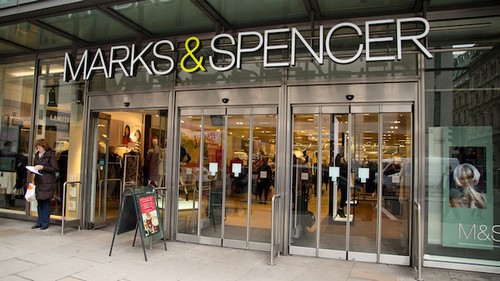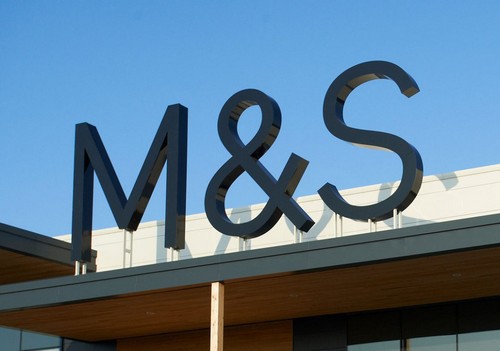The Marketing mix of Marks and Spencer analyses the 4Ps of Marks and Spencer, which includes the Product, Price, Place, and Promotion of Marks and Spencer. Marks and Spencer, commonly known as M&S, is a public limited company of British origin. It is associated with the Lifestyle and Retail industry as it deals in the retail category. The famous company was founded in 1884 by its co-founders, Thomas Spencer and Sir Michael Marks. It faces competition from competitors.
- Farmfoods
- Tesco
- Centra
- Asda
- Aldi
About Marks and Spencer
- Type: Multinational retailer
- Industry: Retail
- Founded: 1884
- Founders: Michael Marks and Thomas Spencer
- Headquarters: London
- Area served: Worldwide
- Key people: Archie Norman (Chairman) and Stuart Machin (CEO)
- Number of employees: 78,000+
Table of Contents
Marks and Spencer Product Strategy
Marks and Spencer believes in eco-friendly goods and fair-trade products and has worked wholeheartedly to achieve this. It has a diversified product packaging portfolio that includes
Women
- Apparel- Jackets, coats, trousers, t-shirts, tops, beachwear, swimwear, workwear, suits, sportswear, skirts, shorts, blouses, shirts, leggings, joggers, cardigans, jumpers, jeans and dresses
- Accessories- Watches, jewelry, purse, and handbags
- Footwear- Slippers, shoes, sandals and boots
- Lingerie- Camisoles, vests, thermals, shapewear, slips, bodies, nightdresses, general knickers, t-shirt bras, sports bras, strapless bras, post-surgery bras, maternity bras, first bras, DD+ bras, bracelets
Men
- Footwear- Socks, slippers and footwear
- Nightwear- Dressing gown, pajamas and underwear
- Formalwear- Suits, customized shirts, blazers, jackets, formal trousers and formal shirts
- Apparel- Polos, t-shirts, tops, swimwear, shorts, cardigans, jumpers, joggers, jeans, jackets, coats, chinos, casual trousers and casual shirts
- Accessories- Wallets, ties, luggage, briefcase and bags
Kids
- School uniforms for both girls and boys
- Girls- Jumpsuits, dresses, underwear, shorts, trousers, t-shirts, tops, swimwear, tights, socks, dressing gowns, pajamas, slippers, boots, and shoes
- Boys- Underwear, shorts, trousers, t-shirts, swimwear, socks, dressing gowns, pajamas, slippers, boots, shoes and suits
Beauty-
- Skincare- Toners, night cream, serum, exfoliator, eye care and day cream
- Makeup- Nail polish, lipstick and foundation
- Hair care- Conditioner and shampoo
- Toiletries- Soaps, moisturizer, hand-wash, hand cream, shower gel and bath gel
Home
- Accessories- Artificial flowers, candle holders, curtains, cushions, lighting, mirrors, figurines, vases, rugs, and ornaments
- Bed and Bath- Towels, bath mats, children’s bedding and bedding
- Cooking and dining- Table linen, serve-ware, glassware, dinnerware, cutlery, baking and cookware
- Travel bags and luggage
Furniture
- Sofa, love seats, footstools, armchairs, TV cabinet, side table, console table, bookcases, dining chair, dining table, and display cabinet
Wine
- Red wine, white wine, rose wine, champagne, cava and sparkling
Food
- Cakes, cold meat, fruit, fish, desserts and cheese
Flowers
- Flower bouquets, luxury flowers, outdoor plants, orchids, and indoor plant
Marks and Spencer (M&S), a renowned British retailer, offers various products across various product lines and categories.
The product mix of Marks and Spencer in 2023 is as follows (Source)
- Clothing: A significant part of their product line, M&S is known for high-quality clothing for men, women, and children. This includes formal wear, casual wear, lingerie, and sleepwear.
- Food and Beverages: M&S has a strong presence in the food sector, offering high-quality food products, including fresh produce, bakery items, prepared meals, snacks, and a selection of wines and other beverages.
- Home and Furniture: They provide a variety of home products such as bedding, kitchenware, home decor, and furniture items for different rooms in a house.
- Beauty Products: M&S offers a range of beauty and personal care products, including skincare, makeup, fragrances, and bath and body products.
- Gifts and Flowers: The company also has a selection of gifts and flower arrangements, catering to various occasions like birthdays, anniversaries, and holidays.
These categories reflect the broad market segments that M&S targets, offering products and customer services that cater to a wide range of customer needs and preferences.
Marks and Spencer Place Strategy
Marks and Spencer has spread its presence in the international market to places like Egypt, Spain, Qatar, Jordan, Morocco, Finland, Ireland, Kabul, Canada, France, Germany, Belgium, China, India and Austria. It is a multinational retailer headquartered in the City of Westminster in London.
The company has established overseas offices in Sri Lanka, Indonesia, Italy, China, Turkey, Bangladesh, India, Thailand, Hong Kong and Malaysia. In the United Kingdom, it operates via nine hundred and seventy-nine outlets, and recently, its overseas outlet count has crossed the one-thousand mark. In India, it started operations in 2001, with over fifty outlets for selling its products.
Marks and Spencer sells its products via its outlets, strategically chosen to gain maximum brand visibility to traditional media and customers. Its outlets are tastefully decorated to offer a soothing ambiance. By the end of 2017, the company had eighty-four thousand nine hundred and thirty-nine employees who offered the best possible services to its customers.
In 1999, the company launched its online shopping store for the first time, and since then, customers have been able to make purchases and get home delivery services. Online stores offer more customers the option of buying in local currency to suit their needs.
Marks and Spencer’s place strategy is as follows:
- Extensive Store Network: They have a vast network of stores across the UK and internationally, making their products easily accessible to a broad customer base.
- Online Presence: M&S has invested significantly in its online platform, offering a comprehensive e-commerce experience that complements its physical stores.
- Strategic Store Locations: Their stores are typically in high-footfall areas like city centers, shopping malls, and widespread retail parks, aiming to maximize customer reach and convenience.
- Global Expansion: M&S has extended its reach globally through international stores and partnerships, adapting to local markets while maintaining brand consistency.
- Omnichannel Retailing: They integrate online and offline channels, providing a seamless shopping experience where customers can buy online and pick up in-store, or vice versa.
Marks and Spencer Pricing Strategy
At the end of the 2017 financial year, Marks and Spencer posted its revenues and net income at 10,622.0 million pounds and 115.7 million pounds, respectively. Its operating income was 690.6 million pounds.
Marks and Spencer has its brand of apparel. It caters to upper and upper-middle-class sections of society. Its products are perceived as value for money because of its diversified range, convenience, and high quality.
The company has its in-house brand for apparel, which is meant for everyone, including men, women, and children. These products are of premium quality, but the company and marketing management have kept their prices between medium and high. Marks and Spencer face rivalry in the consumer market. Intense competition means limited market share, and to increase its mass-market consumption, the company has adopted a competitive pricing policy.
Marks and Spencer has adopted a dynamic pricing policy, and during off seasons, festive seasons, and seasonal times, it offers customers incentives and discounts. This results in a two-way benefit. The company can clear its old stock, and the incentives help increase sales figures.
Marks and Spencer’s pricing strategy reflects a keen understanding of its market position and customer base, focusing on delivering value while maintaining its reputation for quality. Here’s a closer look at their approach:
- Value-Based Pricing: M&S often employs value-based pricing, setting prices based on the perceived value of their products to customers. This strategy is evident in their clothing and home goods, where quality and brand reputation justify a premium over budget retailers.
- Competitive Pricing in Food Segment: In the food sector, M&S frequently adjusts prices to stay competitive with other grocery retailers, balancing quality with affordability. This helps them remain a strong player in the highly competitive food market.
- Promotional Pricing: Marks and Spencer use promotional strategies like sales, discounts, and special offers, particularly in their clothing and home segments. These promotions help attract price-sensitive customers and manage inventory levels.
- Premium Pricing for Exclusive Ranges: For exclusive or specialty products, such as their luxury food items or Autograph clothing line, M&S often uses premium pricing. This strategy capitalizes on pricing the unique value and quality of these products.
- Dynamic Pricing Online: With a robust onliPricingence, M&S can use dynamic pricing, adjusting prices based on pricing, competition, and market trends. This approach helps them remain agile and responsive in a fast-paced retail environment.
Overall, Marks and Spencer’s pricing strategy focuses on a balanced mix of premium and competitive pricing, tailored to different proPricinggments and customer expectations, underlining their status as a retailer that offers both quality and value.
Marks and Spencer Promotion Strategy
Marks and Spencer believes in a full-on marketing policy and has aligned itself with every possible tool. It has adopted both above-the-line and below-the-line strategies to make its presence felt. The brand has carefully chosen raw materials for its campaigns and displayed them in print, digital, and visuals in magazines, newspapers, radio, television channels, billboards, and hoardings. The brand realizes the importance of celebrity endorsements. Over the years, it has roped in several personalities to market its products, like Myleene Klass, Antonio Banderas, Lisa Snowdown, and John Sergeant.
Marks and Spencer has an in-store strategy that helps promote its products via its outlets. Its favorite promotional medium is online, and it promotes heavily via its website. Product information, promotional activities, and related information are regularly uploaded to the website. News of various discounts, offers, and incentives are also first made known via its official website.
Marks and Spencer has a loyalty program, and Sparks keeps adding points to the customer’s account accounts. This is based on the total amount of shopping by the customer. Reward points are collected and later can be redeemed on further purchases. The company believes in charitable works and has actively participated in several events. In 2015, the company launched the Spark Something Good event, where volunteers worked for various charities.
Marks and Spencer’s promotion marketing strategy is as follows:
- They utilize traditional and digital marketing, including TV and print advertising, a solid social media presence, and email marketing to reach a broad audience.
- Seasonal and event-driven campaigns, such as for Christmas or Back-to-School, are a staple, often featuring special offers, limited-time products, and themed marketing.
- Loyalty programs and partnerships, like the Sparks loyalty card, provide personalized offers and benefits, encouraging repeat business and fostering a sense of brand loyalty.
Some Recent Video ads and Print ads of Marks and Spencer are:
Liked this post? Check out the complete series on Marketing Mix


The M&S British Birds jigsaw is full of errors – some of the birds are not British and others are misnamed – children will be learning wrong info from this product. I have tried telling customer services but they are not interested and will not put me in touch with design or marketing sections